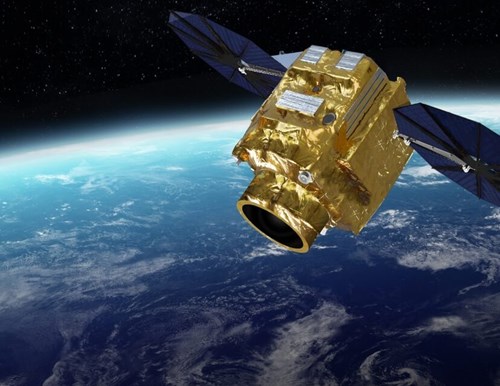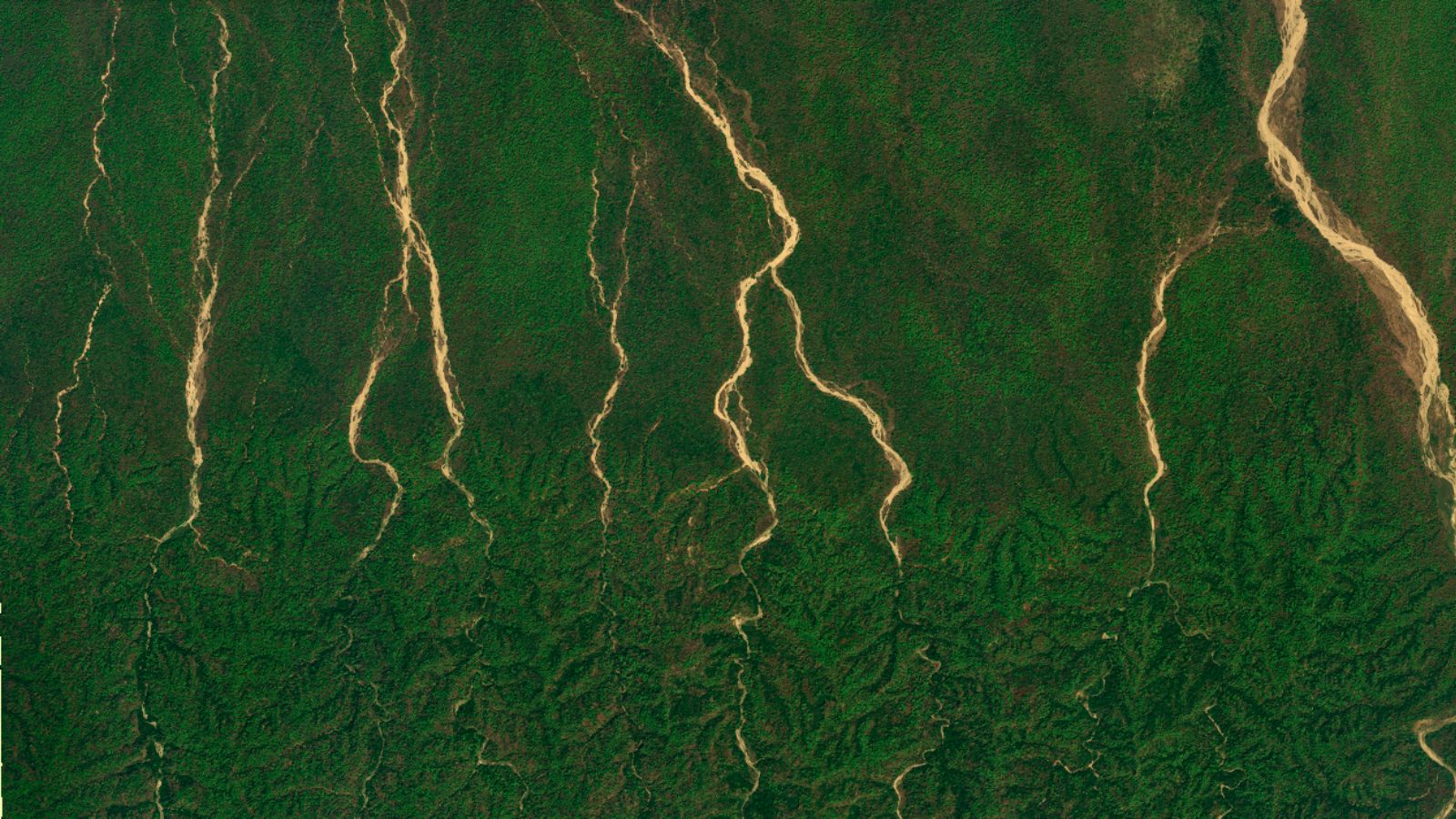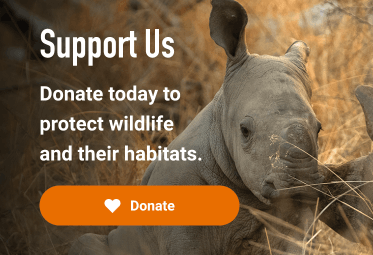

Upcoming projects
- State of species
- Ecosystem management
- Ecosystem connectivity

Upcoming projects
We’re currently supporting more groundbreaking projects from our Round 2 and Round 3 Satellites for Biodiversity award winners as they prepare their write-ups, which will be published on the Ecosystem Insight Hub in the coming months:
Zoological Society of London (ZSL): Optimising grassland management
ZSL is harnessing newly tasked and archived 30cm Pleiades Neo satellite imagery to identify and refine the most cost-effective grassland management strategies in the Chitwan-Parsa Complex of Nepal.
By combining in-depth field surveys with advanced machine learning techniques, the team will analyse satellite data to accurately map vegetation cover and assess the impact of various habitat interventions. The goal is to enhance the resilience and ecological balance of grassland ecosystems through evidence-based decision-making.
Dugong and Seagrass Research Station: Mapping Seagrass Meadows and Dugongs on Thailand’s Andaman Coast
This collaboration sets out to protect one of the ocean’s most elusive mammals—the dugong—by safeguarding seagrass meadows along Thailand’s Andaman Coast. Using high-resolution satellite imagery, drones, citizen science and machine learning, the team will map seagrass distribution, monitor dugong populations and pinpoint critical habitats for restoration.
The findings aim to reveal the links between habitat loss and dugong decline, while guiding conservation strategies such as community-led monitoring and coastal restoration initiatives. By bridging advanced technology with local knowledge, the project will inform national strategies for biodiversity protection, carbon sequestration and climate resilience.
Conservation X Labs: Defending Giant Sequoia Forests Against Bark Beetles in California
This project aims to protect the world’s largest trees—the Giant Sequoias—now threatened by drought and bark beetle outbreaks. Using AI and high-resolution satellite imagery, the team aims to develop an early warning system that detects infestations before they spread.
By adapting the open-source Scout platform, Conservation X Labs will scan canopy health for early signs of decline, delivering rapid alerts to land managers. The findings will guide targeted treatments such as insecticide injections, while empowering park services and coalitions with scalable tools to safeguard these ancient carbon-storing giants and boost their resilience in a changing climate.
Wildlife Conservation Trust: Protecting Riverine Ecosystems in the Gangetic Basin
Aiming to safeguard the last nesting habitats of ancient reptiles—the gharial and endangered river turtles—within India’s Gangetic Basin. Using high-resolution satellite imagery, AI, and field validation, the team will map and monitor critical sandbanks and islands that are vital for basking, nesting, and hatching.
By tracking seasonal habitat changes caused by flooding, sand mining and encroachment, the project aims to provide actionable data to inform conservation strategies and enforcement. Through community engagement and sustainable livelihoods, it seeks to curb illegal practices, offset habitat loss and build resilience for rivers, wetlands and the threatened species that depend on them.
Victoria University of Wellington: Southern Royal Albatross Conservation on Campbell Island
Seeks to protect the world’s largest breeding population of Southern Royal Albatross, found almost entirely on Campbell Island in New Zealand’s subantarctic. Using very high-resolution satellite imagery and deep learning, researchers will detect nests, estimate population sizes and monitor breeding success.
Field-collected GPS nest data will validate AI models, distinguishing active from abandoned nests. By automating monitoring, the project reduces reliance on costly expeditions while delivering vital insights into population trends and threats such as climate change and fisheries bycatch. The findings hope to guide long-term conservation strategies and scalable seabird protection worldwide.
Wild Chimpanzee Foundation: Restoring Ecosystems After Infrastructure Projects in Guinea
This project aims to protect Western chimpanzees and African forest elephants threatened by new infrastructure, including a railway cutting through Guinea’s forthcoming Pinselli-Soyah-Sabouyah National Park. Using high-resolution satellite imagery and AI-driven models, the team will detect waste sites, borrow pits and informal settlements disrupting critical habitats.
By integrating satellite intelligence with on-the-ground patrol data, the project will deliver faster, more targeted restoration strategies while easing pressure on field teams. The findings aim to mitigate immediate impacts on endangered species and create a scalable, data-driven model for monitoring development projects across tropical ecosystems worldwide.
The Innovation for Conservation Programme & University of Cumbria: Predicting Snaring Hotspots in Murchison Falls
This project seeks to protect wildlife in Uganda’s largest national park from one of its gravest threats: wire snares. By combining high-resolution satellite imagery with predictive modelling, researchers strive to identify vegetation patterns and landscape features linked to snaring activity, helping pinpoint hotspots for ranger patrols.
Integrated into EarthRanger, these insights will enable adaptive, data-driven anti-poaching strategies, reducing wildlife fatalities among lions, elephants, giraffes and antelopes. Complementing enforcement, the Snares to Wares initiative transforms confiscated wires into sculptures, providing former poachers with sustainable livelihoods and strengthening community-led conservation around Murchison Falls.
A growing hub
All insights and outputs from Satellites for Biodiversity award-winning projects will be shared via the Ecosystem Insight Hub, offering ongoing knowledge and practical applications for conservationists and Earth Observation experts worldwide. Round 3 award winners will be further added to the hub in 2026.

